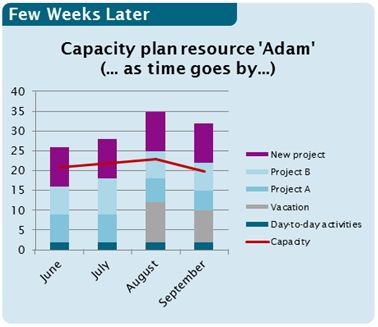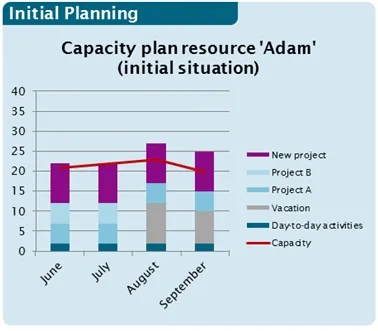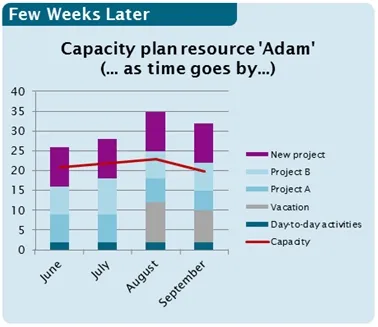Temptation That Lead to Conflicts in Resource Management
March 13, 2012
Small communication traps and missing transparency in resource planning often lead to conflicts and costly over-allocations in projects.
I share this case to show how transparency in resource management avoids conflicts, reduces risks and supports collaboration – a key step to make projects succeed in complex organizations.

Standish Group’s Chaos Report of 2009 states that 68% of all projects are not successful. Due to latest experiences and my research, one important factor to mitigate the risk of failure is having the right resources in place when needed.
This article shows how simple temptations in communication combined with missing transparency lead to a mismatch in resource allocations.
Let’s view an example where the project manager first meets the resource and next the resource manager. Then let’s drill into the resulting issues.
1. Project manager asks resource for capacity

The project manager asks for at least 2–3 months and the resource tempts to confirm this (there are many reasons for this). On the communication level: Adam receives the question with “2 months” (sender-receiver issue). And since this would work out, he simply confirms.
2. Project manager asks resource manager for approval

The project manager asks for approval. The resource manager is a little irritated that everything’s already clarified and approves by trusting the given information. Confirmation is sent via e-mail in separated systems.
3. Analysis
Let’s look at the resulting planning. June and July are fine. First issues will rise in August and September, when the resource is on vacation. We are facing an over-allocation of ~20%.

And now, a few weeks later, let’s view the same situation again. As time goes by I assume that efforts in “Project A” rise by 25% and “Project B” cannot be finished in time (should have been completed in July). Now we are looking at an over-allocation of ~50%.

Assuming we are not having this kind of transparency, the question is: Who will prioritize? Most likely it will be the resource doing the work that is liked best. And there is a high risk that this is not the work bringing the ideal overall benefit. Put differently: Having No Transparency Will Burn Money.
This is only one example of situations with issues in communication and lacking transparency. I ran into settings like this not only once, and sometimes they have even been worse. Now that we have a common understanding we can start discussing how to address these issues. My next article is on how to create transparency.
If this article caught your attention, stay tuned here or visit my session at the Microsoft Project Conference (#mspc12) in Phoenix, AZ, March 20th–22nd (abstract for session #pc309).
Ingo Meironke, PMP – Manager at Campana & Schott - @meiroTweet